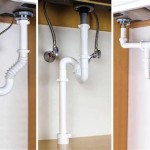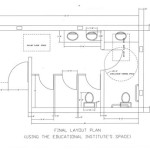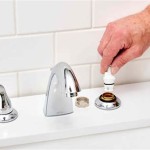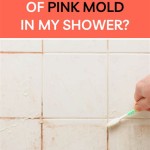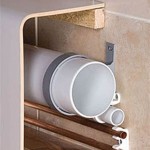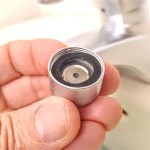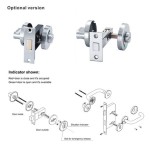How to Get Rid of Black Mold From Bathroom Ceiling
Black mold, scientifically known as *Stachybotrys chartarum*, is a type of fungus that can thrive in damp, humid environments. Bathrooms, due to their propensity for moisture from showers, baths, and poor ventilation, are particularly susceptible to black mold growth, especially on the ceiling. Addressing black mold promptly and effectively is crucial, not only for aesthetic reasons but also for maintaining a healthy living environment. Prolonged exposure to black mold spores can lead to respiratory issues, allergic reactions, and other health problems. This article provides a comprehensive guide on how to identify, remove, and prevent black mold from forming on your bathroom ceiling.
Before initiating any mold removal process, it is imperative to understand the potential health risks associated with black mold. While not all molds are toxic, *Stachybotrys chartarum* is known to produce mycotoxins, which can be harmful to human health. Individuals with compromised immune systems, allergies, asthma, or other respiratory conditions are particularly vulnerable to the adverse effects of mold exposure. Symptoms may include coughing, wheezing, sneezing, skin irritation, eye irritation, headaches, and fatigue. In severe cases, prolonged exposure can lead to more serious health complications. If you suspect you are experiencing health problems related to mold exposure, consult a medical professional.
Furthermore, assessing the extent of the mold infestation is crucial before attempting removal. Small, localized areas of mold growth (less than 10 square feet) can often be handled by homeowners using appropriate safety precautions and cleaning techniques. However, larger infestations may require professional mold remediation services. Professionals have the expertise, equipment, and protective gear to safely and effectively remove mold without spreading spores to other areas of the home. If the mold covers a significant portion of the ceiling or has spread to other areas of the bathroom, it is recommended to seek professional assistance.
Prior to tackling the mold, ensuring proper ventilation is paramount. Open windows and doors, and use exhaust fans to circulate air and reduce humidity levels. This will help to prevent the spread of mold spores during the cleaning process. Additionally, wearing appropriate personal protective equipment (PPE) is essential to minimize exposure to mold spores and cleaning chemicals. This includes wearing gloves, a face mask or respirator, and eye protection (goggles). Protective clothing, such as a disposable coverall, can also help to prevent mold spores from contaminating your clothing.
Identifying Black Mold on the Bathroom Ceiling
Recognizing black mold early is crucial for effective removal and prevention. Black mold typically appears as dark green or black patches on surfaces. These patches can be slimy or fuzzy in texture. However, it's important to note that not all dark mold is necessarily *Stachybotrys chartarum*. Other types of mold can also appear dark in color. To accurately identify the type of mold, you may need to send a sample to a laboratory for testing. While testing isn't always necessary for small areas of mold, it can be helpful in determining the best course of action for larger infestations or if you are concerned about the potential health risks.
Look for telltale signs, such as water stains or discoloration on the ceiling, which can indicate a moisture problem that is contributing to mold growth. Check for condensation around windows, pipes, and other areas where moisture may accumulate. Musty or earthy odors in the bathroom can also be an indicator of mold growth, even if the mold is not immediately visible. If you observe any of these signs, inspect the ceiling and surrounding areas carefully for mold.
Examine the areas around vents, light fixtures, and corners, as these are common places for mold to grow. Mold thrives in areas with poor ventilation and high humidity. If you find mold, take note of its location and size. Documenting the extent of the mold growth will be helpful when determining the appropriate cleaning method and supplies. Furthermore, photograph the mold to document its appearance before and after cleaning. This can be useful for tracking the effectiveness of your cleaning efforts and identifying any recurring problems.
Effective Cleaning Methods for Black Mold Removal
Once the mold has been identified and the necessary precautions have been taken, the cleaning process can begin. Several effective cleaning methods can be used to remove black mold from a bathroom ceiling. The choice of method will depend on the severity of the infestation and the type of surface being cleaned.
One common method involves using a mixture of bleach and water. Mix one part household bleach with ten parts water in a spray bottle. Spray the affected area with the solution and allow it to sit for 10-15 minutes. This will allow the bleach to penetrate the mold and kill the spores. After the waiting period, scrub the area thoroughly with a brush or sponge. Rinse the area with clean water and dry it completely. It is crucial to ensure adequate ventilation during this process, as bleach fumes can be irritating to the respiratory system. Furthermore, avoid mixing bleach with other cleaning products, as this can create toxic fumes.
Another effective cleaning solution is a mixture of white vinegar and water. White vinegar is a natural disinfectant and can kill many types of mold. Pour undiluted white vinegar into a spray bottle and spray the affected area. Allow it to sit for at least one hour before scrubbing and rinsing. Vinegar has a strong odor, but it is generally considered to be a safer alternative to bleach. For heavily soiled areas, you can use full-strength vinegar without diluting it with water. After cleaning with vinegar, it is important to dry the area thoroughly to prevent the mold from returning.
Baking soda is another natural cleaning agent that can be used to remove mold. Create a paste by mixing baking soda with water. Apply the paste to the affected area and allow it to dry completely. Once the paste is dry, scrub the area with a brush or sponge and rinse with clean water. Baking soda is a mild abrasive and can help to remove mold stains. It also helps to absorb moisture and deodorize the area. Baking soda is a safe and effective option for those who are sensitive to harsh chemicals.
For more stubborn mold stains, a commercial mold remover may be necessary. These products are specifically formulated to kill mold and remove stains. Follow the manufacturer's instructions carefully when using commercial mold removers. Wear appropriate PPE, including gloves, a mask, and eye protection. Ensure adequate ventilation during the application and cleaning process. Always test the product in an inconspicuous area first to ensure it does not damage the ceiling material.
Regardless of the cleaning method used, it is essential to thoroughly dry the cleaned area to prevent mold from returning. Use a clean cloth or towel to wipe away any excess moisture. You can also use a fan or dehumidifier to help speed up the drying process. Regularly inspect the cleaned area for any signs of recurring mold growth. If mold reappears, repeat the cleaning process and address the underlying moisture problem.
Preventing Future Black Mold Growth
Preventing mold growth is often more effective than trying to remove it once it has taken hold. Several strategies can be implemented to minimize moisture and humidity in the bathroom, thereby preventing mold from thriving.
Adequate ventilation is paramount. Ensure that the bathroom exhaust fan is functioning properly and use it during and after showers or baths. If the bathroom does not have an exhaust fan, consider installing one. Open windows and doors to increase air circulation whenever possible. Proper ventilation helps to remove moisture and humidity, creating an environment that is less conducive to mold growth. Remember to clean the exhaust fan regularly to ensure it is operating efficiently.
Addressing leaks and water damage promptly is essential. Repair any leaky faucets, pipes, or toilets. Check for and repair any roof leaks or water damage in the ceiling. Water leaks provide a constant source of moisture that can fuel mold growth. Regularly inspect the bathroom for signs of water damage, such as water stains, discoloration, or peeling paint. Addressing these issues quickly can prevent mold from becoming a problem.
Controlling humidity levels is crucial. Use a dehumidifier to reduce humidity in the bathroom, especially during humid months. Wipe down shower walls and doors after each use to remove excess moisture. Hang towels and bath mats to dry properly. Consider using a mold-resistant paint in the bathroom to help prevent mold growth on painted surfaces. These paints contain additives that inhibit the growth of mold and mildew. Furthermore, avoid storing damp items in the bathroom, as they can contribute to increased humidity levels.
Regular cleaning and maintenance can also help prevent mold growth. Clean the bathroom regularly with a mold-killing cleaner. Pay attention to areas that are prone to moisture, such as the shower, tub, and sink. Inspect the grout and caulking around the shower and tub for cracks or damage and repair them as needed. Damaged grout and caulking can allow water to penetrate behind the tiles, creating an ideal environment for mold growth. By maintaining a clean and dry bathroom environment, you can significantly reduce the risk of black mold growth.
By following these guidelines, homeowners can effectively remove black mold from their bathroom ceilings and prevent its recurrence, fostering a healthier and more comfortable living space.

How To Remove Black Mold From A Bathroom Ceiling

Bathroom Ceiling Mold Removal When To Clean Call Branch Environmental

Cleaning Mold From Bathroom Ceilings Like A Pro Lovetoknow

Black Spots On The Bathroom Ceiling Flood Water Damage Honolulu Oahu Hawaii Md Restoration

What Is The Best Way To Remove Mold From Bathroom Ceiling

How To Get Rid Of Mold On Your Bathroom Ceiling Aqa

Cleaning Mrs Hinch Fans Share Tips To Remove Ceiling Mould Express Co

Ceiling Mold Growth Learn The Cause And How To Prevent It Environix

Mold On Bathroom Ceiling How To Clean Off

How To Remove Mould From Your Bathroom Ceiling Cleanipedia Za
Related Posts
